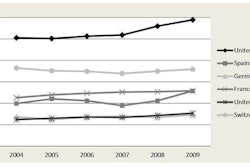Ever since the statistical end of the Great Recession an argument has raged about deficit spending by the federal government.
Belt-tightening types (usually Republicans) want to rein in spending because they think government deficits hurt the economy. Their opponents (usually Democrats) say the government needs to spend more to stimulate the economy.
Who is right? The spenders seem to be winning the argument right now. Mother Jones magazine has a good summary of the debate here.
But buried on the second page of the Mother Jones article is this key paragraph:
“Unless the borrowed money is spent in ways that foster economic growth in a big way, paying it back or paying interest on it forever will mean future pain in the form of higher taxes or lower spending.” In other words, if borrowed money is spent wisely—for example, on roads or electric grids—then it will promote future growth, which makes paying down the debt manageable. If it’s not, high debt might indeed cause future pain.
To spend or not to spend should not be the issue. The real issue is what to spend our tax dollars on. Politicians hide behind a false narrative of a battle between tax-and-spend or fiscal restraint. But our government has been taxing, borrowing and spending about the same percentage of the GDP for decades.
So why, despite the Federal Reserve’s four massive stimulus spends—aka Quantitative Easing 1, 2, 3 and 4—is the economy not recovering as it has in every past recession and recovery?









